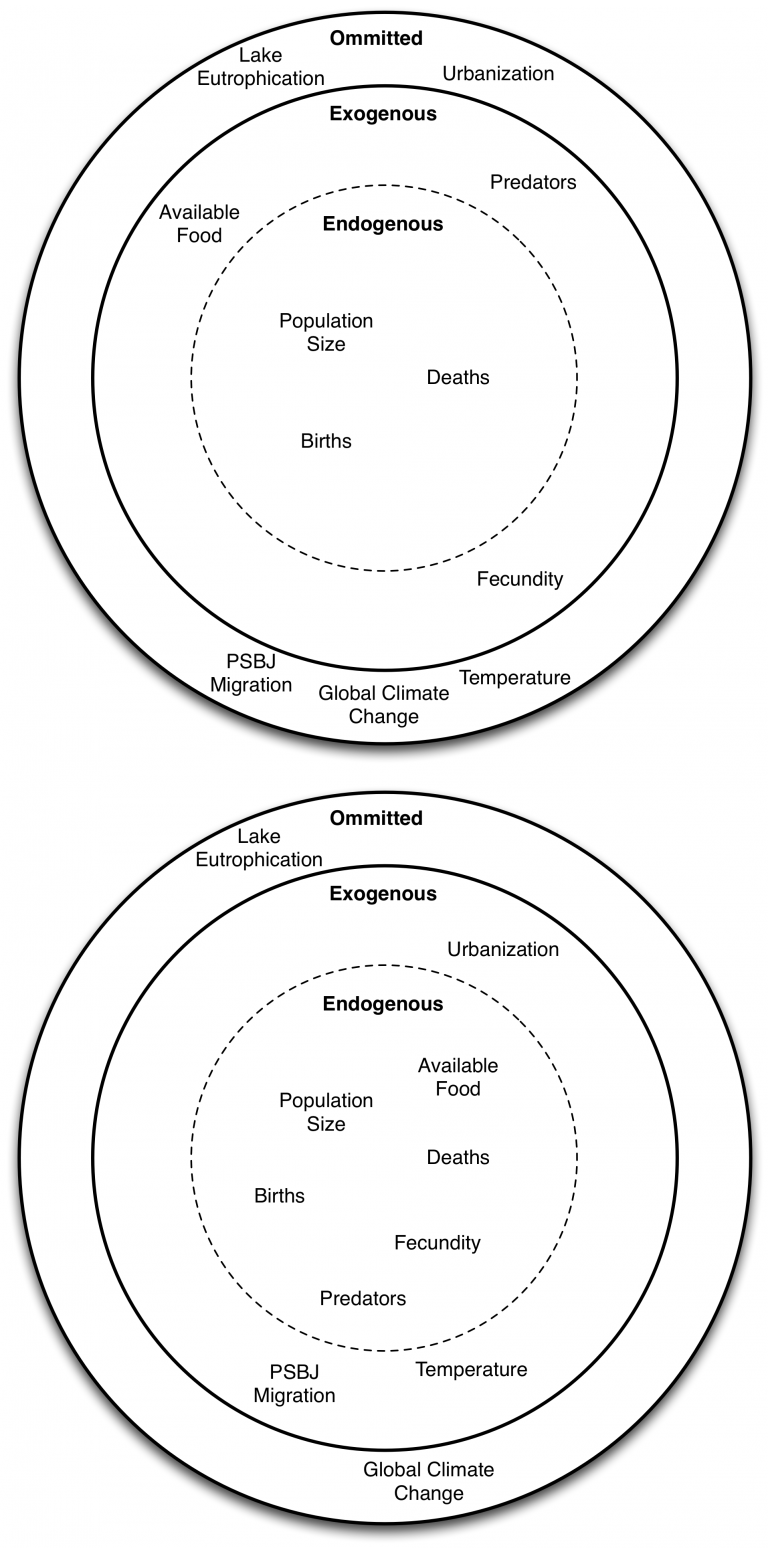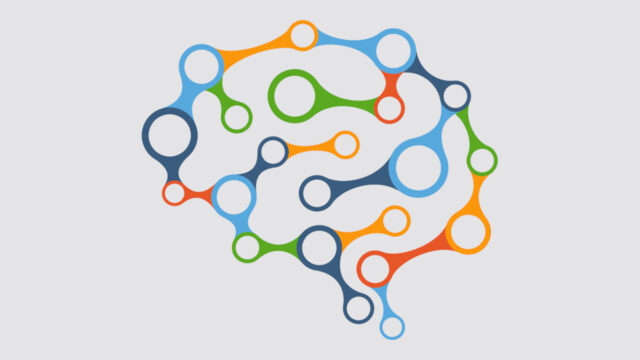
The Process of Modeling: Model Boundaries [Systems thinking & modelling series]
This is part 47 of a series of articles featuring the book Beyond Connecting the Dots, Modeling for Meaningful Results.
There are many different mechanisms and entities we could include in our model of the hamster population1. Of course there are the hamsters themselves but there are also hamster predators, the hamsters’ food, climatic conditions that affect the growth and survival of the hamsters, urbanization, eutrophication that affects the hamsters’ lake, and so on. Given that it would be impossible to include every single element and mechanism in our model, we must define the boundaries of the system.
We can illustrate model system boundaries using a boundary diagram as illustrated in the excellent book The Electronic Oracle2.
When using a model boundary diagram, we classify items of interest into one of three categories:
- Endogenous: Endogenous items are at the core of the model. They are things that the model itself determines. For instance, the size of the hamster population is endogenous to the model. The model itself simulates this population.
- Exogenous: Exogenous items are those that you include in the model but which you do not directly simulate. For instance, if we thought temperature had a significant effect on hamster survival, we might want to include historical temperature data in the model. We do not want to simulate this data though, we just want to use it as an exogenous input into the model.
- Omitted: Omitted items are those that we choose not to include in the model, even though we may acknowledge their existence and potential (direct or indirect) impact on the hamsters. Even the most ambitious and comprehensive model will need to draw the line somewhere.
Figure 1 illustrates two different model boundaries for the hamster model. The top diagram depicts a small, conservative model with many features excluded from the model. The bottom figure illustrates a much more ambitious model where many additional items are made endogenous to the model and there are many fewer omitted items.

We recommend starting with narrow boundaries. In the minimum viable model, you will want to omit as many different mechanisms as possible. As you receive feedback and people push you to include more mechanisms, you can slowly expand the boundaries of the model. We recommend starting small and expanding as necessary.
| Exercise 6-1 |
|---|
| Create a boundary diagram for a model of human population growth over the next 100 years. What would be the endogenous, exogenous, and omitted items in this model? |
| Exercise 6-2 |
|---|
| Create a boundary diagram for a model forecasting the total quantity of pencils sold within the United States for the next 50 years. What would be the endogenous, exogenous, and omitted items in this model? |
Next edition: The Process of Modeling: From Mental Models to Simulation Models.
Article sources: Beyond Connecting the Dots, Insight Maker. Reproduced by permission.
Header image source: Beyond Connecting the Dots.
References and notes:
- The idea of the “butterfly effect” is that the flapping of a butterfly’s wings in Europe can initiate slight air disturbances that interact and magnify until they create a hurricane in Florida. If we believe in such avalanche effects to small events, the number of potential items we should include in the model is literally endless. ↩
- Meadows, D. H., and J. M. Robinson. 1985. The Electronic Oracle. Albany, NY: System Dynamics Society.; This book provides an excellent overview of a number of different models and, very interestingly, it tracks the ultimate reception and success or failure of these models. ↩



